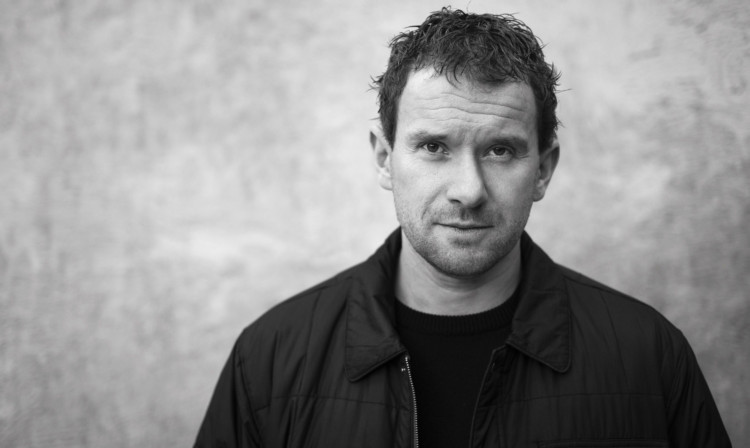
“The agents, the fixers, the people who contribute nothing to football and leech money out don’t like me,”
Arild Stavrum has never been afraid to shock.
Back in 2000 while he was starring for Aberdeen, the pony-tailed Norwegian cut off all his hair, boxed it up and posted it off to the local paper!
That was in response to a reporter hinting his long locks were hindering him on the pitch.
The fact Stavrum was delighted when they then put the hair up as a competition prize was evidence of an extrovert personality.
Thirteen years on, he is more concerned with messages delivered with body parts as he tries to make inroads on his goal of becoming Scandinavia’s next superstar crime writer.
The works of Henning Mankell, Jo Nesbo and the late Stieg Larsson have, between them, sold 100 million copies, with many being turned into successful film adaptations.
That’s one reason why Stavrum will watch Tuesday’s clash between Norway and Scotland on television rather than in person in order to concentrate on his writing duties.
Stavrum has written four novels, all involving football to varying degrees, and they’ve sold well in his homeland.
One, Golden Boys the story of the murder of Norway’s top football agent, is currently being translated into English ahead of a UK release next summer.
“It will be the realisation of one of my lifetime ambitions,” says 41-year-old Stavrum, who was in the Aberdeen side which lost 4-0 to Rangers in the 2000 Scottish Cup Final.
“I was thrilled when my books were first published in Norway, but this is on another level altogether.
“To have a publisher who has the faith to have someone spend months translating your work so it can be read in a different country, in a different language, is a brilliant feeling.
“To put it into a football context, it will be up there with playing for Norway or scoring against Hibs to help Aberdeen reach the Scottish Cup Final. And, of course, both were fantastic.
“How far it will take me, I can’t know. But in writing, as in football, you have to be yourself.”
The peppering of his conversation with references to the two disciplines is no coincidence.
Stavrum credits good writing with helping him become a better footballer. Likewise, he credits football with helping him become the writer he wanted to be.
“For me, the two go very much hand in hand,” explains the former striker, who also works as a part-time teacher and occasional television pundit.
“I always read and loved books by guys like Mankell and Nesbo, but when I was playing it became an even bigger thing for me.
“Basically, I found I had problems thinking about football all the time. I did not want everything in my life to be about the game.
“You can watch films and what have you but they don’t have the same ability to take you out of yourself the way that books do.
“I found that reading was great at helping me switch off from playing, so that when I needed to be sharp for Aberdeen or whoever, I could be.
“Eventually I found myself wanting to write books, to tell stories the way I wanted. To do things with characters that worked for me and pleased me.
“And when I started, it was natural to me to write about football.”
Not about goals, cup runs and formations, though, but of a game corrupted by bungs, blackmail, and bent agents.
Of games being thrown on orders of criminal match-fixers and of a part of the industry the public never usually sees.
A work of fiction?
Well, right now the SFA are looking to recruit a former top policeman to become their full-time Security & Integrity Officer, to look into match-fixing.
“I have always felt football throws up lots of different possibilities when it comes to constructing a crime story,” Stavrum continues.
“If you get a transfer deal worth £8 or £9million, say, it is not impossible to get a scenario where some £300,000 can just disappear and that is a serious amount of money!
“In dressing-rooms, too, there can be huge differences in what individual players earn. That can lead to jealousy and tension, which can lead to trouble.
“I have been there, and it holds every bit as true in Norway or in Scotland as it does in the high-profile English Premier League.
“It’s true, I do focus on dark areas of the game but they do exist, believe me.”
Sometimes life imitates art. When it happened to Stavrum, it proved pleasingly profitable.
“When I first wrote about match-fixing, I drew a lot of criticism,” he reveals. “People said: ‘This is not possible in Norway. There is no way that it can go on here.’
“Then, three months later, an enormous scandal exploded about match-fixing in Norway!
“You never like to see these things happen because if games have been thrown, then the people who have paid money in good faith to go and watch their sport have been cheated.
“In this case, though, it was nice to see people who had questioned my work proved wrong. It was also very good publicity for the books!”
Not that everyone in the game was pleased.
“The real-life equivalents of the people I criticise in my books the agents, the fixers, the people who contribute nothing to football and leech money out don’t like me,” says Stavrum.
“I provoke them, but that is OK. I don’t care what they think.
“Football doesn’t belong to them, and if readers take only that one message from my books, I will be a very happy man.”

Enjoy the convenience of having The Sunday Post delivered as a digital ePaper straight to your smartphone, tablet or computer.
Subscribe for only £5.49 a month and enjoy all the benefits of the printed paper as a digital replica.
Subscribe